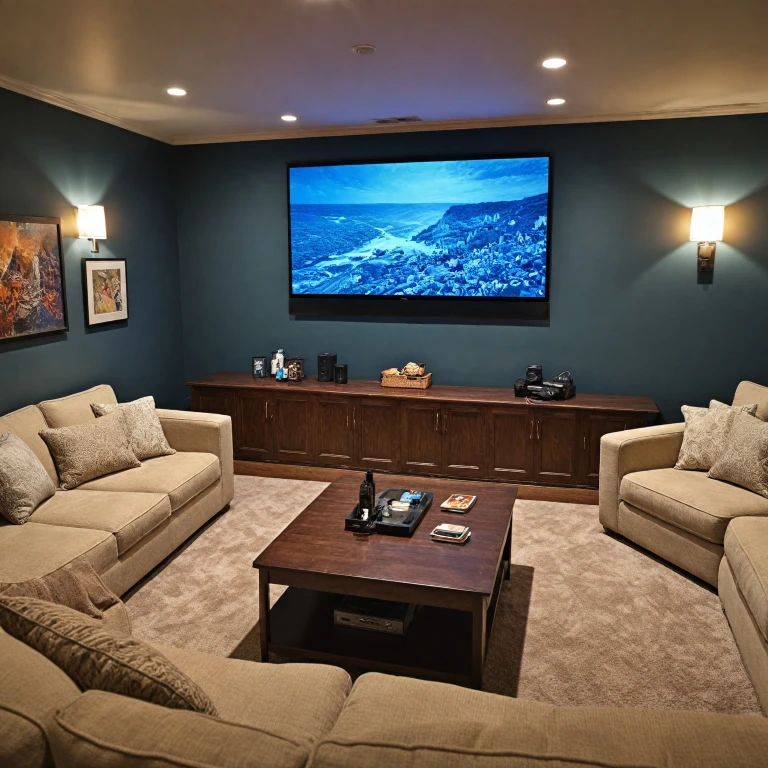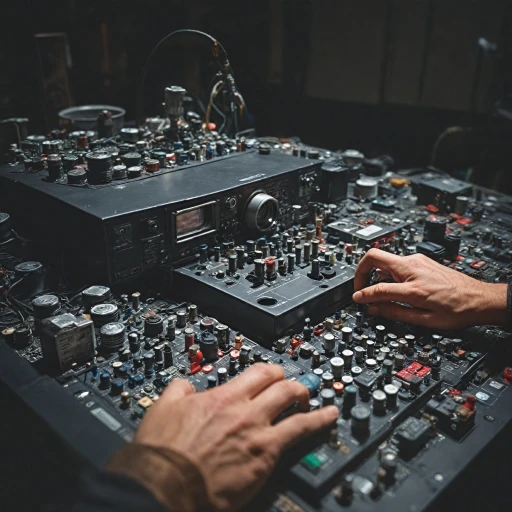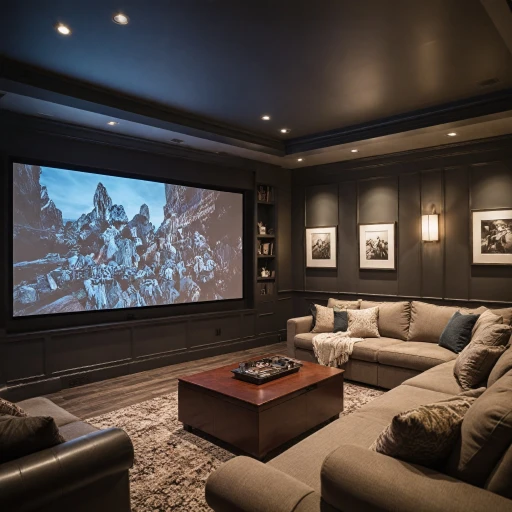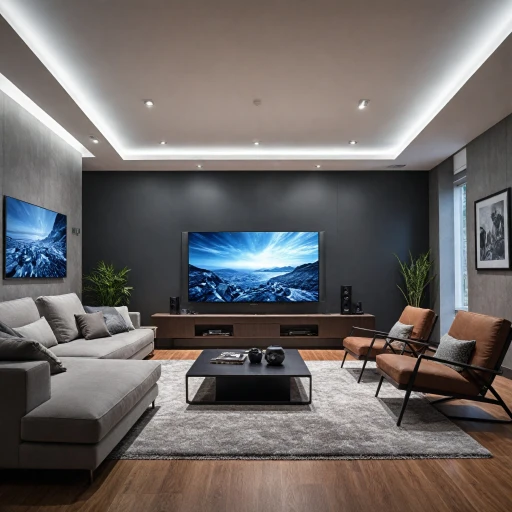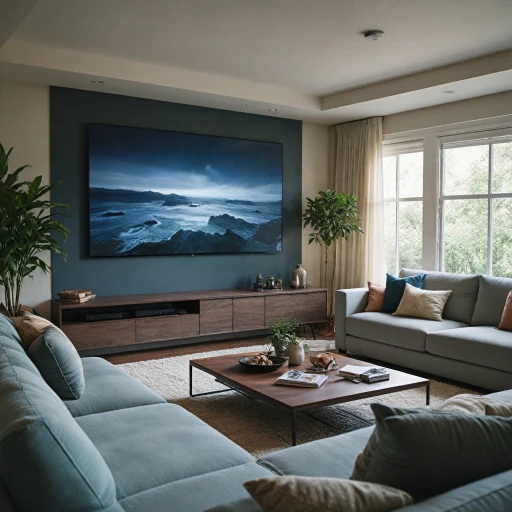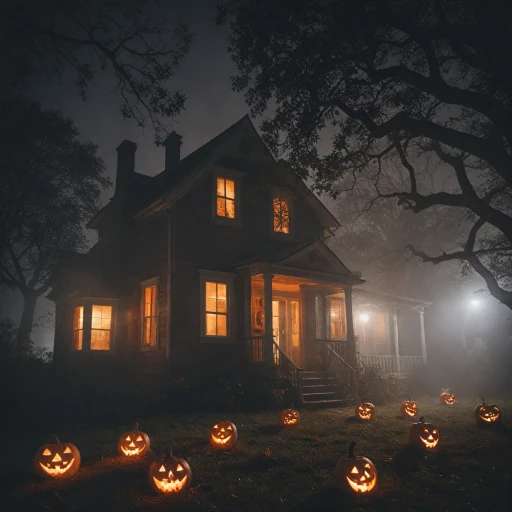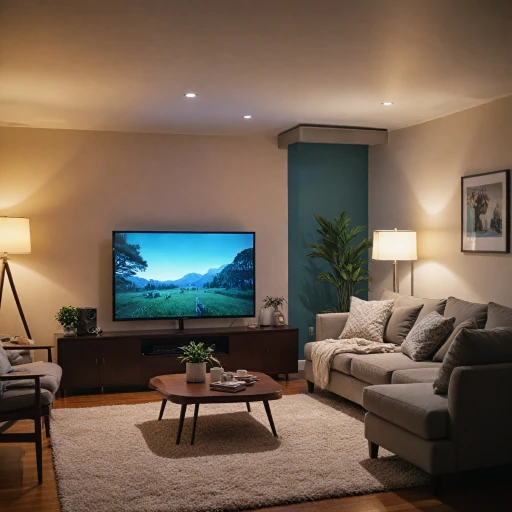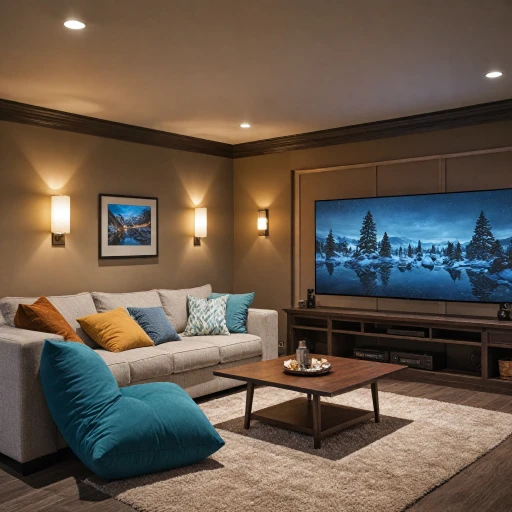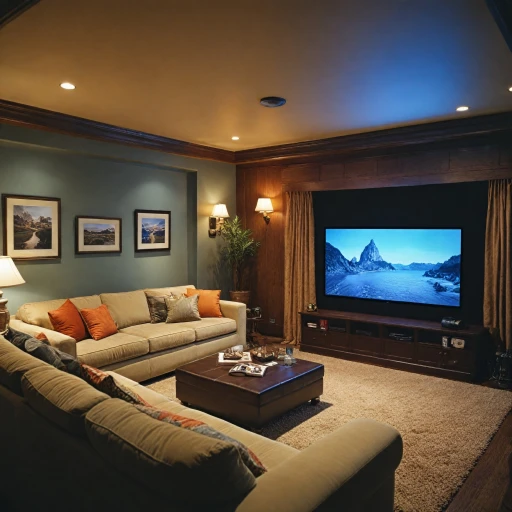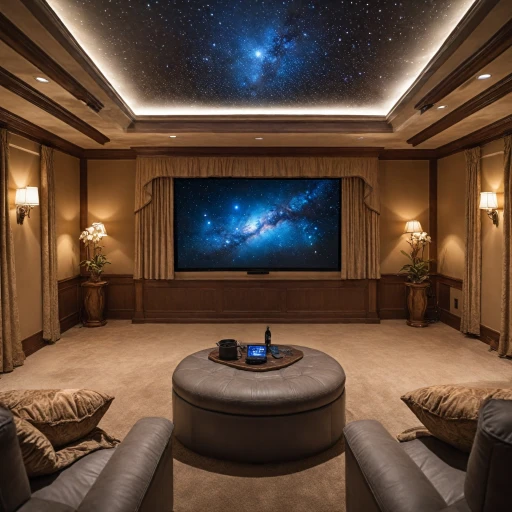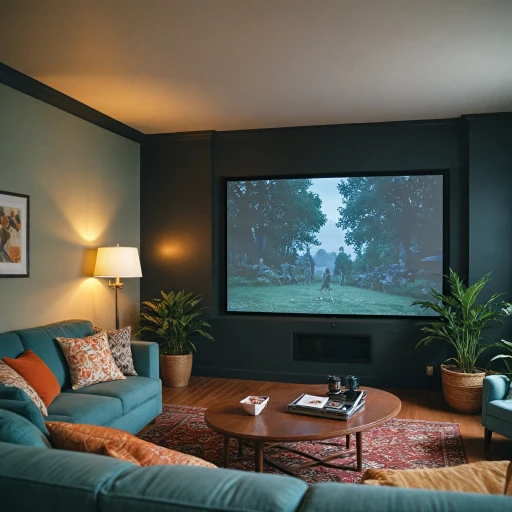
Understanding Ultra Short Throw Projectors
What Makes Ultra Short Throw Projectors Unique?
Ultra Short Throw (UST) projectors are distinguished by their ability to project large images from extremely short distances. Unlike traditional projectors that require substantial space between the projector and screen, UST projectors utilize specialized lenses and mirrors to achieve their unique functionality. This allows for a cinematic experience even in compact spaces, making them particularly suitable for modern home theaters where space optimization is key. UST projectors leverage cutting-edge laser technology, providing a bright and vivid image even in ambient light conditions. The laser light source contributes to superior color accuracy, with options like Epson's EpiqVision Ultra and Hisense Pro leading the charge in delivering striking visuals with impressive color contrast. With advances in triple laser tech, current models boast exceptional color fidelity, ensuring every shade is rendered with precision, enhancing the overall viewing experience. One of the primary benefits of UST projectors is their ability to maintain high-quality images in bright rooms, a critical factor for home theaters. The combination of high brightness levels and efficient throw ratios ensures clear and detailed projections even in less-than-ideal lighting situations. Moreover, this makes setting up these projectors straightforward as they can be situated close to the screen, reducing the need for extensive cabling and mounting hardware. For those interested in immersive home entertainment without the hassle of complex installations, UST projectors present an appealing solution. Their compact design and ease of setup make them a preferred choice among homeowners looking to enhance their vision of a perfect home theater. To learn more about how these projectors can transform your viewing space, explore this guide on how to enhance your home theater experience with a floor projector: Enhance Your Home Theater Experience.Advantages of Ultra Short Throw Projectors
The Edge of Convenience and Design
Ultra short throw projectors offer a unique advantage over traditional options, primarily due to their ability to project large images from a mere inches away from the screen. This feature is a game-changer in home theater setups where space is a constraint. Unlike conventional projectors, which often require a lot of room to achieve optimal image size, these projectors make it possible to produce a cinematic experience even in compact spaces.
Enhanced Picture Quality
When it comes to picture quality, ultra short throw laser projectors stand out for several reasons. The cutting-edge technology, like that found in models such as the Epson EpiqVision Ultra, produces vivid colors and sharp images thanks to high contrast ratios and enhanced brightness levels. These projectors often include features like Dolby Vision, which further elevates the viewing experience, especially in bright rooms.
Flexibility and Versatility
Another advantage is the reduced setup time and versatility it provides. With a throw ratio that allows you to place the projector extremely close to the projection surface, even bright rooms can become suitable for home theaters as UST projectors can minimize the shadow effects and offer an uninterrupted view. Furthermore, innovations like triple laser technology provide exceptional clarity and color accuracy, akin to that of Hisense Pro projectors.
Cost Efficiency Considerations
In terms of price, ultra short throw projectors can range widely depending on the features and brand reputation. Affordable solutions, such as the NexiGo Aurora Pro, make it accessible for various budgets. With considerations for long-term value, the light source longevity provided by UST laser projectors reduces future maintenance and replacement costs, offering cost efficiency over time.
Overall, the decision to integrate an ultra short throw projector into your home theater is one that promises both quality and convenience. To further consider how these projectors can elevate your setup, especially for outdoor movie environments, explore more on how to enhance your outdoor movie nights with a laser projector.
Key Considerations When Choosing an Ultra Short Throw Projector
Factors to Consider When Selecting Ultra Short Throw Projectors
When considering an ultra short throw projector for your home theater, several key factors should be taken into account to ensure optimal performance and satisfaction. Paying attention to these aspects will help you make a well-informed decision.
Resolution and Image Clarity
The resolution of a projector significantly impacts the image clarity and detail. Ultra short throw projectors with a higher resolution, such as 4K, will deliver sharper and more detailed visuals, which is essential for a premium viewing experience. Models like the Epson EpiqVision Ultra and NexiGo Aurora offer impressive resolution that enhances the overall viewing experience.
Brightness and Light Management
Opt for a projector with sufficient brightness, especially if you're setting up in a bright room. Brightness is measured in lumens; a high lumen count can combat ambient light, ensuring the screen remains vivid and visible. Laser projectors, like the Hisense Pro and LTV Pro, often provide excellent brightness levels.
Color Accuracy and Contrast
Consider projectors that offer superior color accuracy and contrast ratios. A good contrast ratio will produce deep blacks and vivid colors, enhancing the overall depth and realism of the image. Projectors with Dolby Vision capability, such as the Aurora Pro, often deliver exceptional color performance.
Sound and Audio Integration
While many projectors come with built-in speakers, the quality may not meet audiophile standards. It's important to assess whether you need an external sound system to complement your projector setup. Consider audio sources, like a soundbar or a full surround sound setup, for immersive audio.
Price and Budget Considerations
Ultra short throw projectors can vary significantly in price. Establish your budget and determine which features are crucial for your viewing habits. While high-end models like Epson EpiqVision and NexiGo Aurora might come at a premium, they often include advanced features such as triple laser technology and enhanced throw ratios.
Test and Review
Before making the final purchase, thoroughly research and read reviews to understand potential pros and cons of each model. Comparing user experiences can provide valuable insights into the performance of the projector in real-world scenarios.
Setting Up Your Home Theater with an Ultra Short Throw Projector
Optimizing Your Home Theater Setup
Setting up an ultra short throw projector for your home theater doesn't have to be a daunting task. With careful planning and attention to detail, you can enhance your viewing experience significantly.- Choosing The Ideal Screen: Opt for a high-quality screen that complements your projector's specifications. An ALR (Ambient Light Rejection) screen is often recommended for rooms with more light, as it enhances the contrast and brightness of the projected image, making it vibrant even in a bright room.
- Considering Placement and Alignment: Unlike standard projectors, ultra short throw projectors can be placed very close to the screen (typically a few inches away), thanks to their advanced throw ratio. However, achieving the perfect placement for optimal image quality might require some experimentation. Use the projector's manual to adjust the unit to the ideal height and distance for a distortion-free image.
- Room Lighting Conditions: To get the most out of your ultra short throw projector, control the surrounding light sources. While laser projectors, like the Epson EpiqVision Ultra, are designed to perform well even in moderate light, reducing ambient light can significantly enhance your viewing experience.
- Audio Considerations: While the picture quality is essential, accompanying your setup with a sound system compatible with your projector will improve immersion. Dolby Vision soundbars can complement the visual excellence of ultra short throw projectors such as the Nexigo Aurora Pro or Hisense Pro.
- Connectivity Matters: Ensure all devices are compatible with the projector's input options. Whether you're using gaming consoles or streaming boxes, make sure you have the right cables, and keep in mind that newer laser projectors often support wireless connectivity, eliminating the hassle of numerous wires.
Comparing Ultra Short Throw Projectors to Other Projector Types
Analyzing Ultra Short Throw Projectors and Their Alternatives
Understanding the differences between ultra short throw projectors and other types of projectors can be essential for making an informed choice. Traditional long-throw projectors, for instance, require more space, as they need to be set up at a greater distance from the screen. This can complicate arrangements in a small or light-controlled room. Conversely, ultra short throw (UST) projectors are designed to project a large image from a very short distance, making them ideal for tight spaces.
The main advantage of UST projectors over short throw or standard throw projectors lies in their placement flexibility. Unlike other models, a UST projector can often be placed just inches away from the projection surface, whether it is a screen or a wall. This feature not only saves space but also maintains the integrity of the image when viewed in rooms with varying brightness levels.
In terms of technology, UST laser projectors, like the Epson EpiqVision Ultra or the Hisense Pro, stand out due to their adoption of advanced light sources. These use laser technology, providing enhanced color accuracy, brightness, and contrast. For example, the EpiqVision Ultra utilizes a triple laser system that generates vivid colors, offering a superior viewing experience even in a bright room setting.
There's also a noteworthy price consideration. Typically, UST projectors are pricier compared to their longer throw counterparts. However, the investment might be justified if the superior convenience, image quality, and technology better match your home theater needs.
When evaluating projection needs, consider the throw ratio, as this will help determine the appropriate type of projector based on your room's specific dimensions. For those seeking versatility and rich image projections like Dolby Vision in their home theater setups, a closer look at projectors like the Nexigo Aurora Pro or the Aurora Pro LTV might offer some satisfying choices.
Troubleshooting Common Issues with Ultra Short Throw Projectors
Identifying and Resolving Common Projector Troubles
When setting up your home theater, issues with your ultra short throw projector can occasionally arise. To ensure optimal performance, below are common problems and straightforward solutions:- Image Distortion: If you're experiencing distorted images, check the throw ratio and placement of your projector. Ultra short throw projectors, like the Epson EpiqVision Ultra, are designed to sit close to the screen. Adjusting the distance and angle can help sharpen the image. The projection surface is also crucial; ensure it's smooth and clean to avoid any color or vision distortion.
- Brightness Concerns: Utilize the brightness settings if your projected image appears too dark or washed out. In a bright room, increasing the projector's brightness can compensate for ambient light. For a room dedicated to home theaters, control the room's light sources to optimize laser projector performance. Brands like Hisense Pro and LTV Pro offer models with adjustable light settings.
- Color Inaccuracy: Calibration might be necessary if colors don't seem accurate. Many projectors, such as the NexiGo Aurora Pro, have built-in color adjustment settings. Follow the manufacturer's guide to achieve the intended color balance.
- Connectivity Issues: Ensure all cables are securely connected if you're having trouble with video input. Ultra short throw projectors usually rely on HDMI connections; double check compatibility and settings. Regular updates from manufacturers can also offer solutions to connectivity glitches.
- Power Problems: If the projector fails to power on or unexpectedly shuts down, check for power supply consistency. Refer to the user manual for troubleshooting specifics and consider reaching out to the manufacturer for persistent issues.
